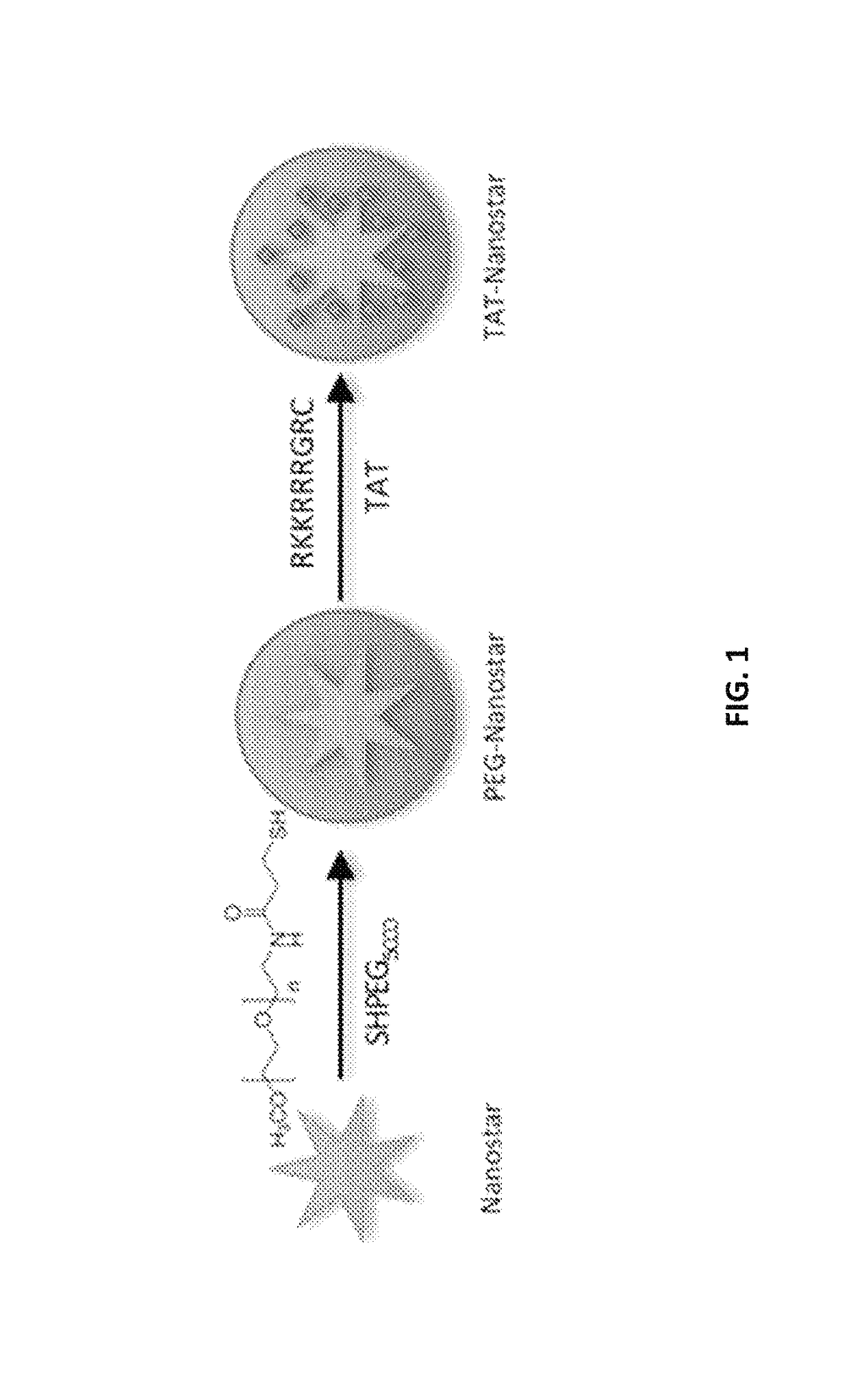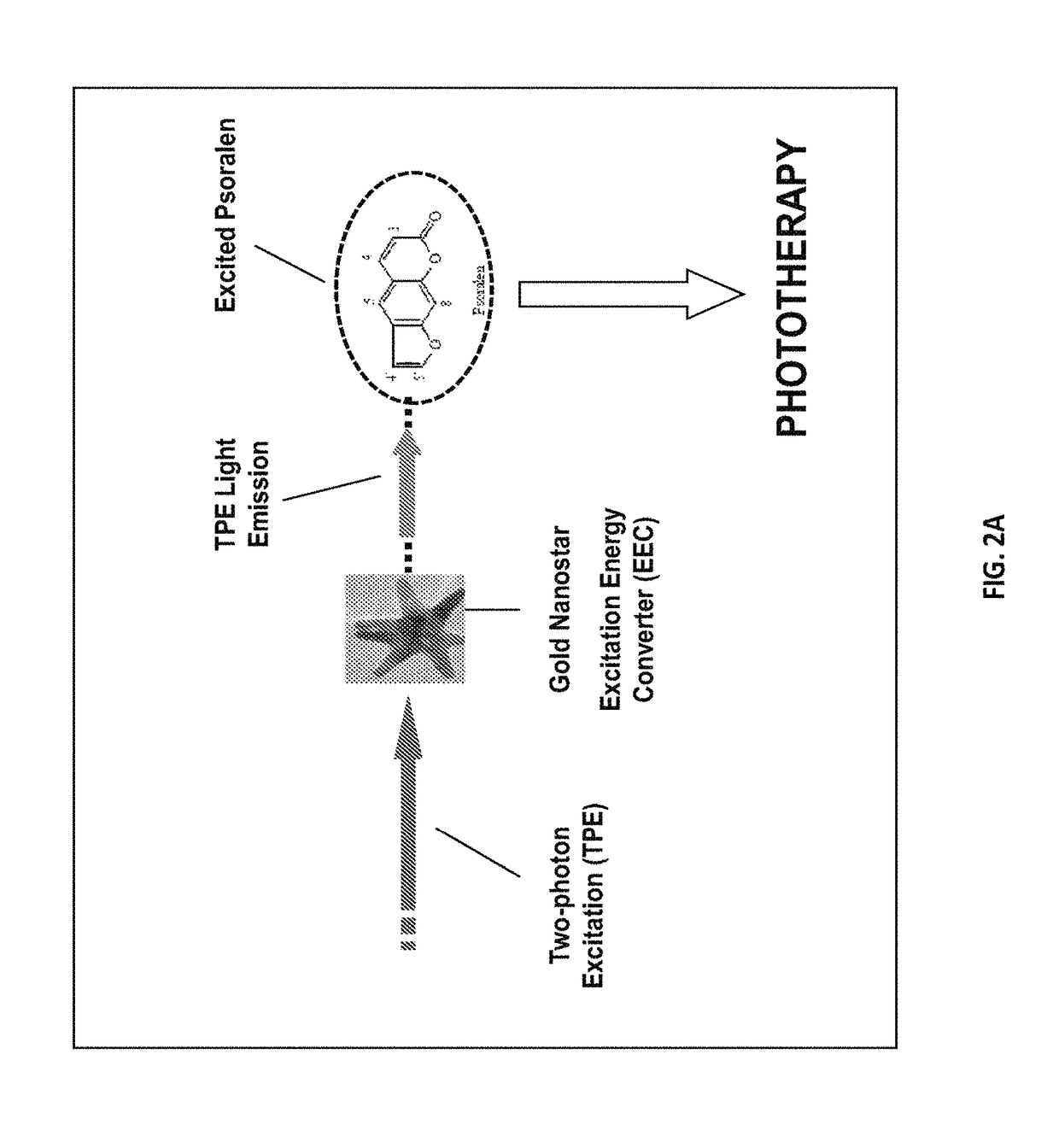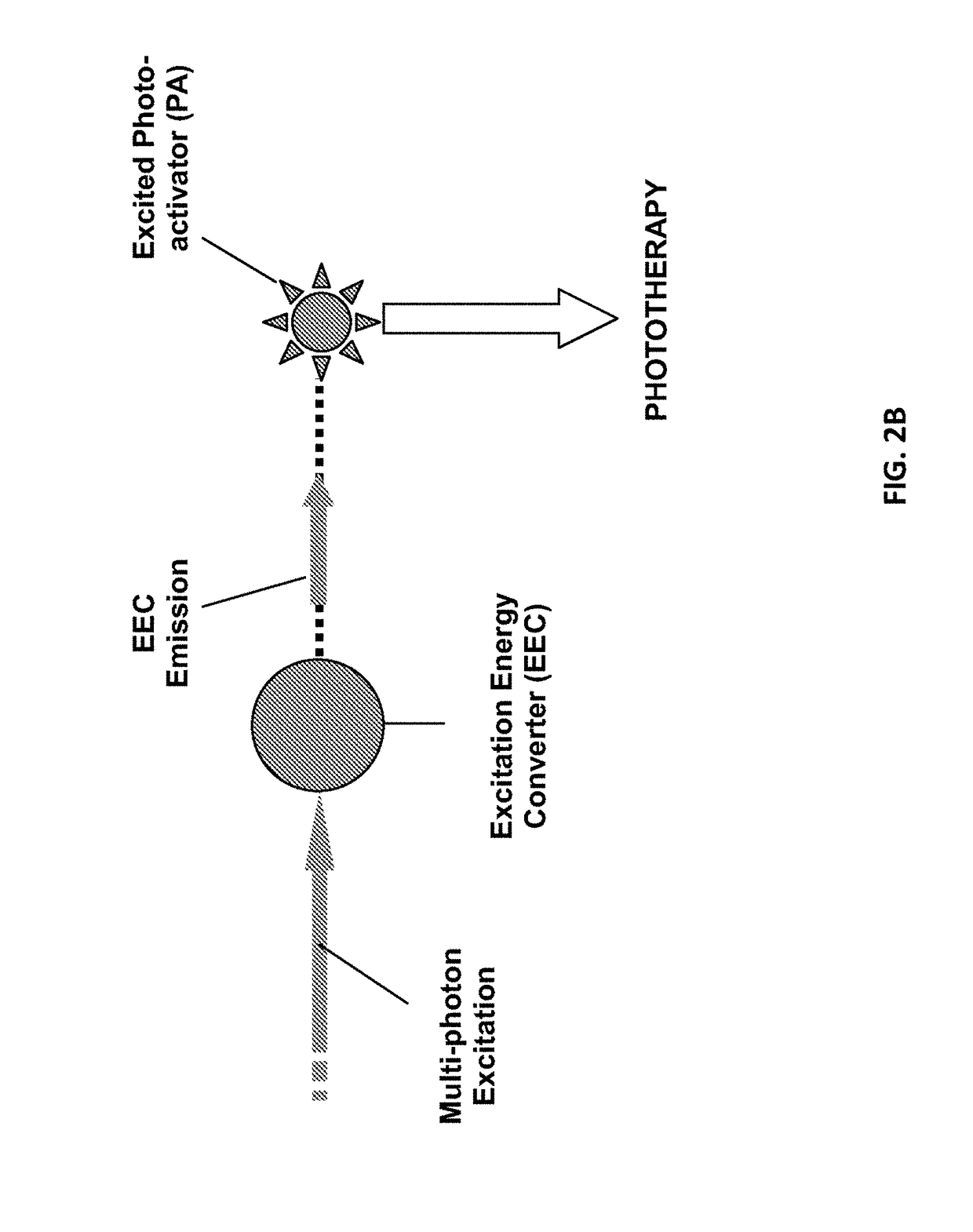Plasmonics-active metal nanostar compositions and methods of use
- Summary
- Abstract
- Description
- Claims
- Application Information
AI Technical Summary
Benefits of technology
Problems solved by technology
Method used
Image
Examples
example 1
Polymer-Free Synthesis Method for Preparation of High-Yield Monodisperse Gold Nanostars
[0132]TAT gold nanostars preparation. All chemicals were purchased from Sigma-Aldrich (St. Louis, Mo.) and used as received unless noted otherwise. Citrate gold seeds were prepared by adding 15 ml of 1% trisodium citrate to 100 ml of boiling HAuCl4 (1 mM) under vigorous stirring for 15 minutes. The solution was cooled and filtered by 0.22 μm nictrocellulose membrane. Gold nanostars (˜60 nm diameter) were prepared using a seed-mediated method by quickly mixing AgNO3 (100 μl, 3 mM) and ascorbic acid (50 μl, 0.1 M) together into 10 ml of HAuCl4 (0.25 mM) with 12 nm citrate seeds (100 μl, OD520: 3.1) followed by filtration using 0.22 μm nictrocellulose membrane.
[0133]In order to obtain nanostars of different geometry while keeping the particle size in a similar range, multiple factors were investigated, including pH, vortexing speed, and concentration of silver nitrate (AgNO3), AA, HAuCl4 and seed. In...
example 2
Enhanced Intracellular Delivery of the TAT Functionalized Gold Nanostars and Efficient NIR Photothermolysis Using Ultralow Irradiance
[0136]Previously published gold nanoparticles have great potential for plasmonic photothermal therapy (photothermolysis). However, their intracellular delivery and photothermolysis efficiency have yet been optimized. To achieve successful selective photothermolysis, nanostars need to be delivered sufficiently to the designated target cells without compromising cells' viability. It requires overcoming several biological barriers. Particles need to be physiologically stable, bind to the cell surface, and traverse the plasma membrane. In this experiment, TAT functionalization of a nanostar of the present disclosure is demonstrated to enhance intracellular delivery. In addition, efficient photothermolysis or photo therapy was achieved with lower irradiance.
[0137]The experiment described below shows that TAT-peptide functionalized gold nanostars entered cel...
example 3
Demonstration of Cell-Killing Effect of Psoralen-TAT-Nanostar Drug Under Two Photon Excitation
[0154]TAT and PsTAT Functionalized Gold Nanostars Preparation.
[0155]All chemicals were purchased from Sigma-Aldrich (St. Louis, Mo.) and used as received unless noted otherwise. Gold nanostars (60 nm diameter) were prepared using a seed-mediated method by quickly mixing AgNO3 and ascorbic acid together into 10 ml HAuCl4 (0.25 mM) with 12 nm citrate seeds (OD520: 2.8). PEGylated gold nanostars were prepared by adding final 5 μM of SHPEG5000 (O-[2-(3-Mercaptopropionylamino)ethyl]-O′-methylpolyethylene glycol, MW 5000) to freshly synthesized gold nanostars for 10 minutes followed by one centrifugal wash then resuspension in pure ethanol. TAT-nanostars were prepared by mixing final 100 μM of TAT-peptide (residues 49-57, sequence Arg-Lys-Lys-Arg-Arg-Arg-Gln-Arg-Cys-CONH2, SynBioSci, Livermore, Calif.) in 1 nM of PEGylated nanostars for 48 hours followed by two centrifugal washes. PsTAT-nanostars...
PUM
| Property | Measurement | Unit |
|---|---|---|
| Molar density | aaaaa | aaaaa |
| Molar density | aaaaa | aaaaa |
| Density | aaaaa | aaaaa |
Abstract
Description
Claims
Application Information
 Login to View More
Login to View More - R&D
- Intellectual Property
- Life Sciences
- Materials
- Tech Scout
- Unparalleled Data Quality
- Higher Quality Content
- 60% Fewer Hallucinations
Browse by: Latest US Patents, China's latest patents, Technical Efficacy Thesaurus, Application Domain, Technology Topic, Popular Technical Reports.
© 2025 PatSnap. All rights reserved.Legal|Privacy policy|Modern Slavery Act Transparency Statement|Sitemap|About US| Contact US: help@patsnap.com



